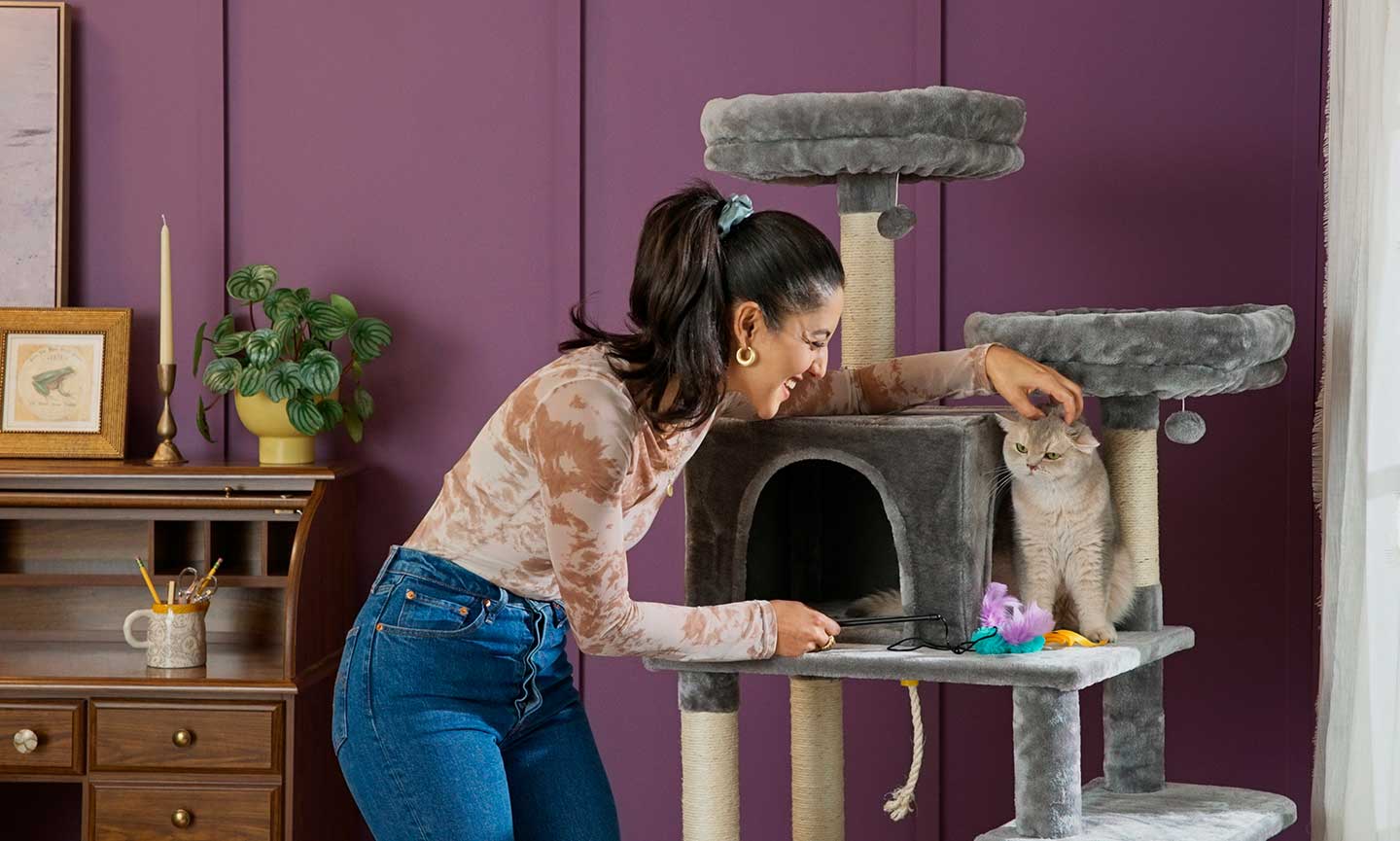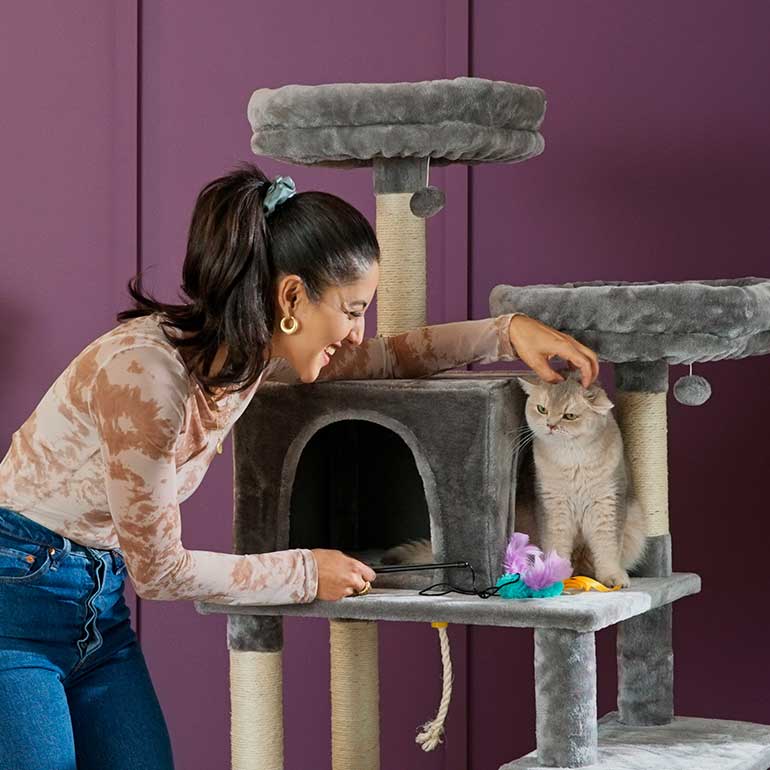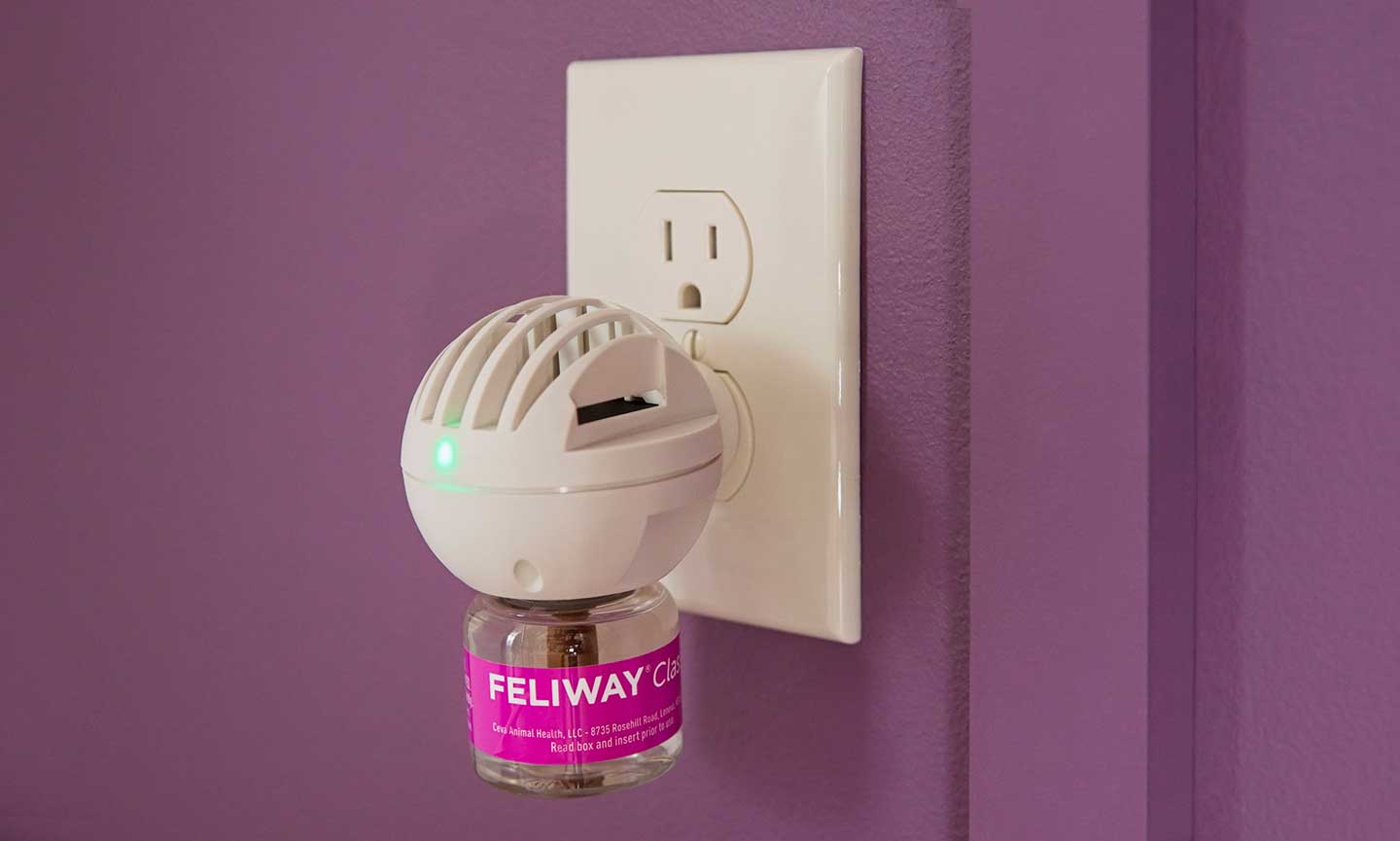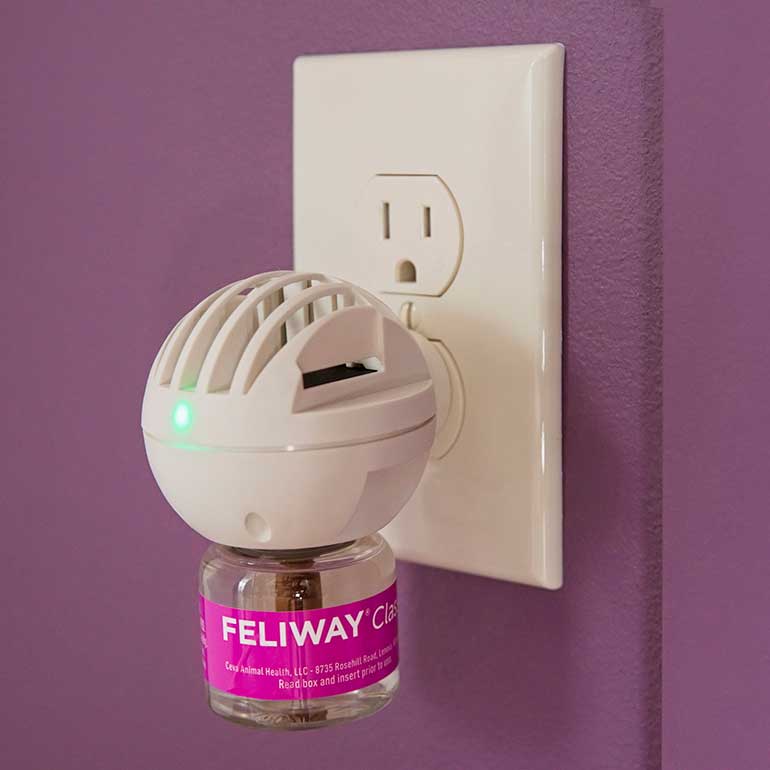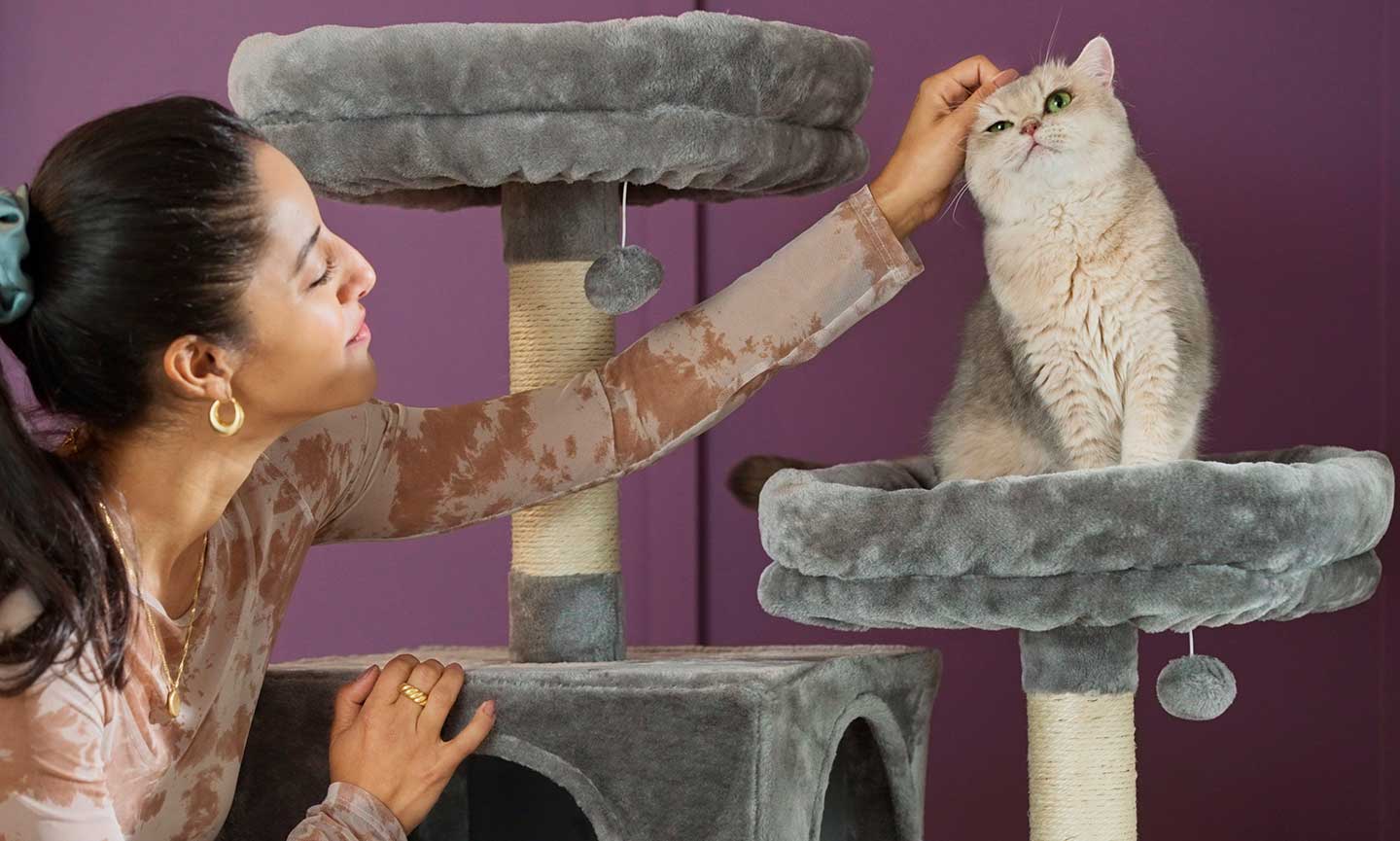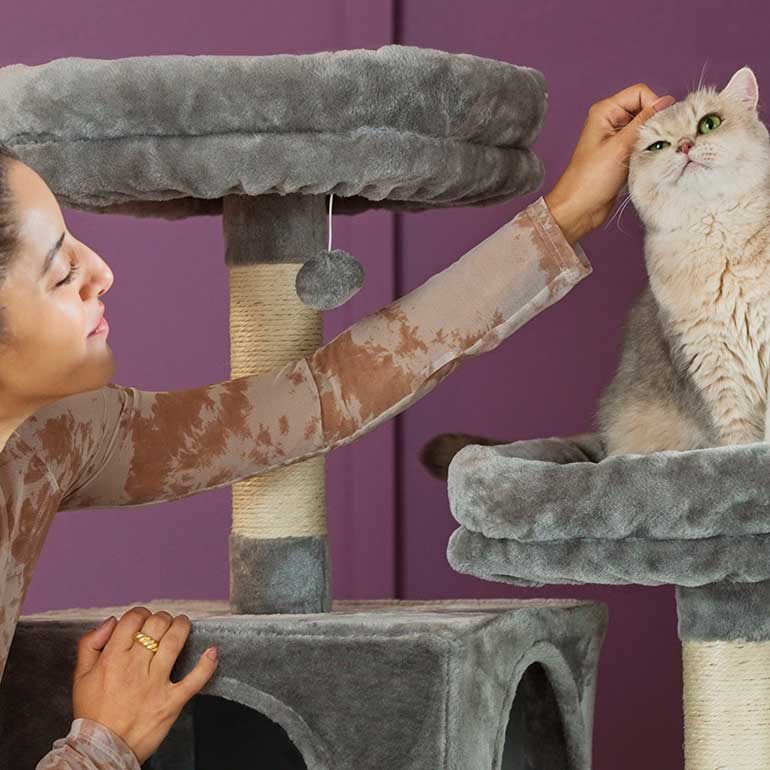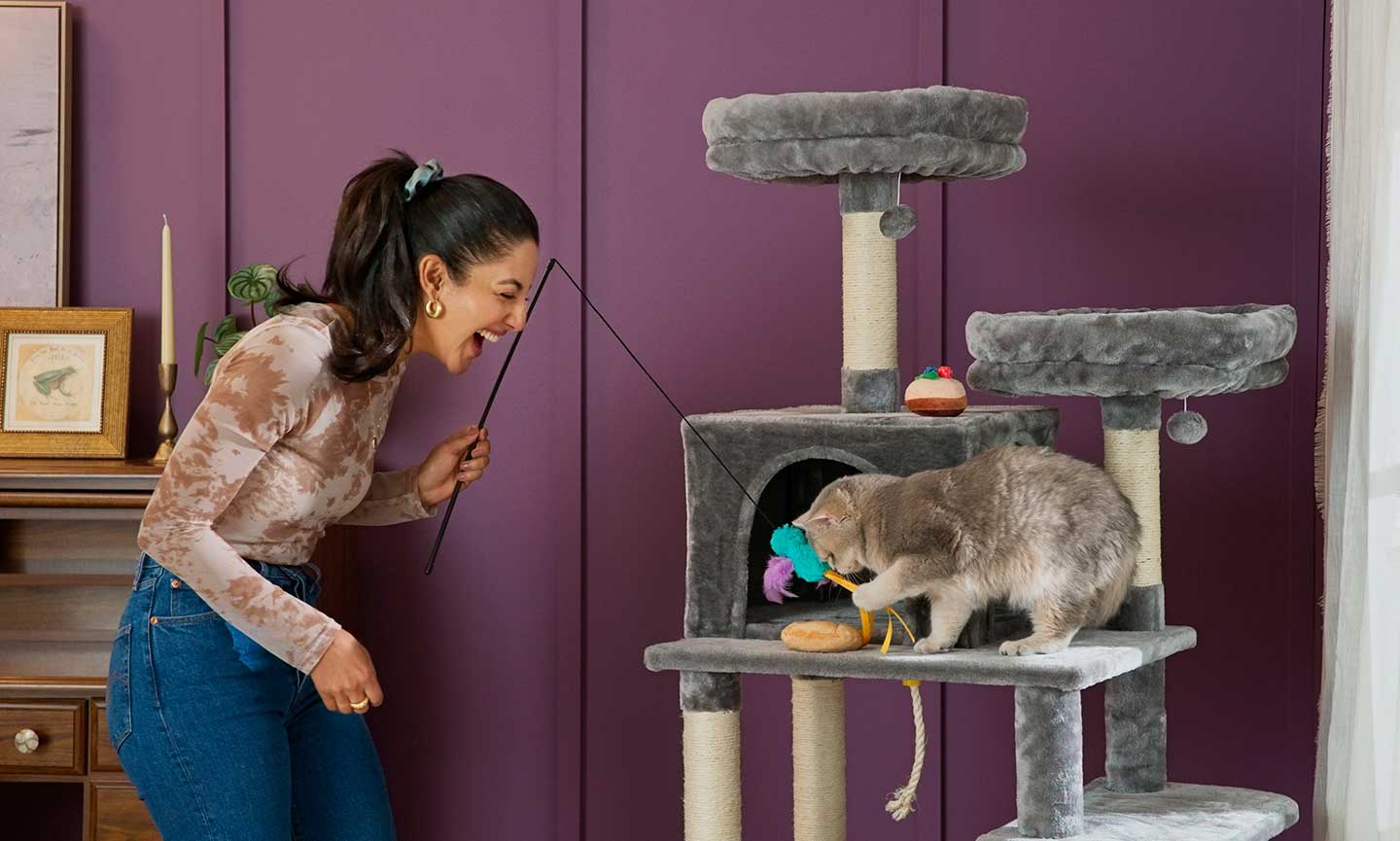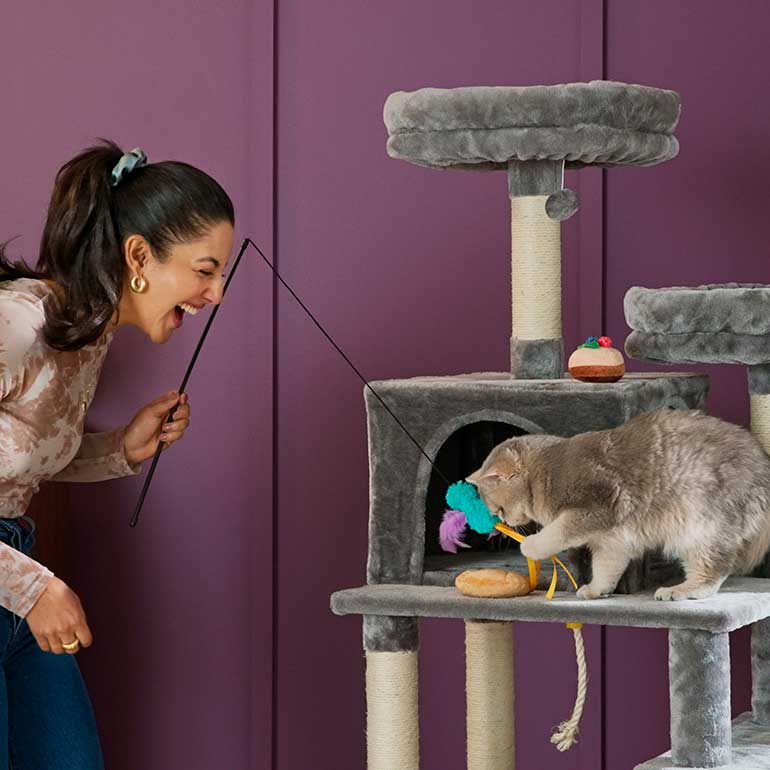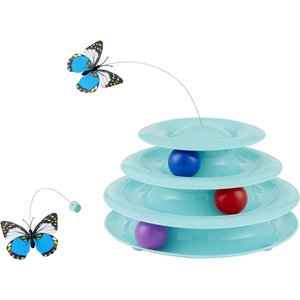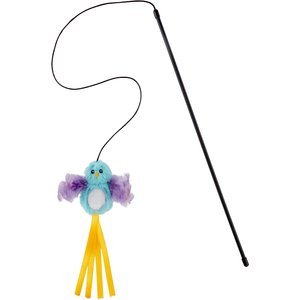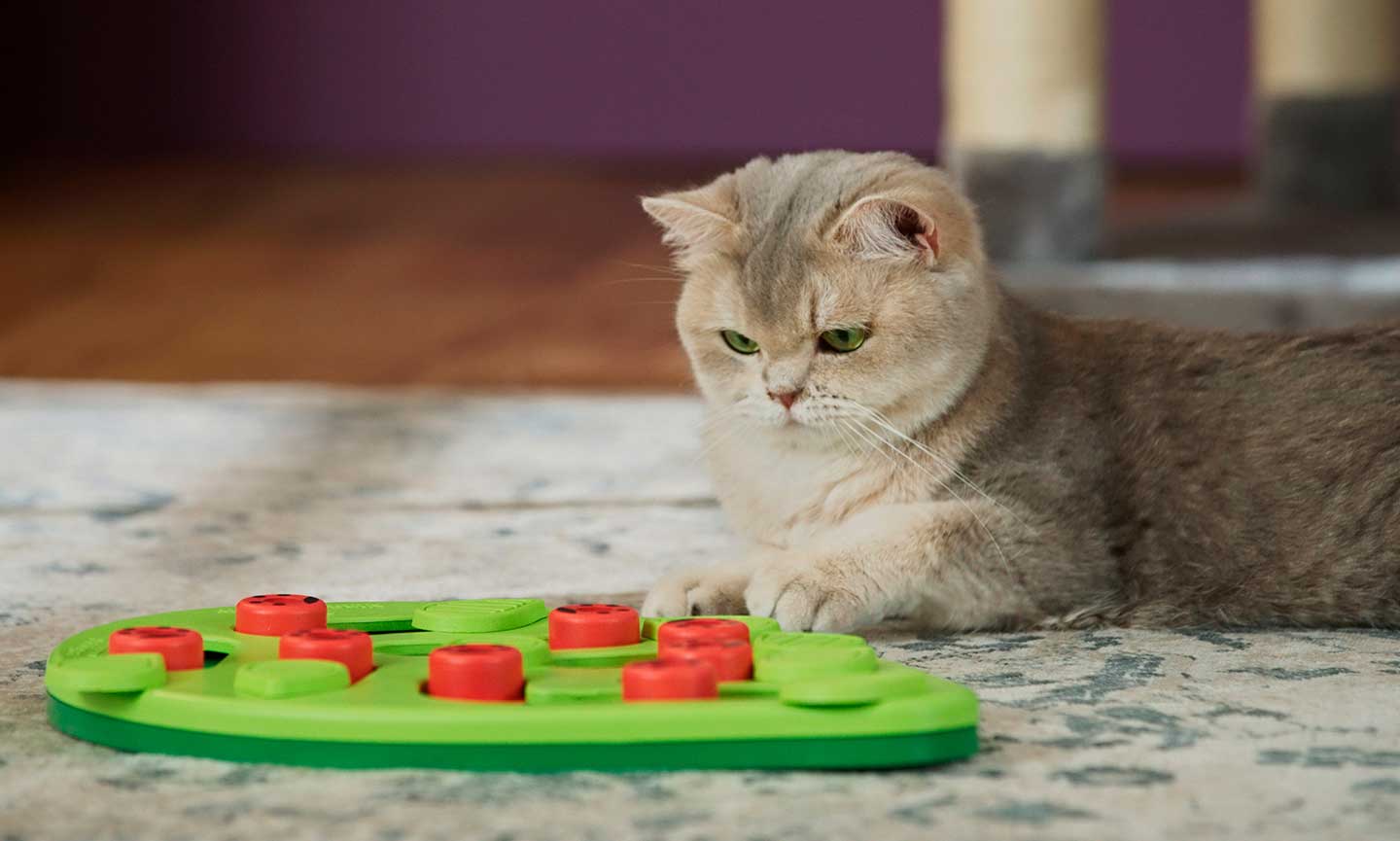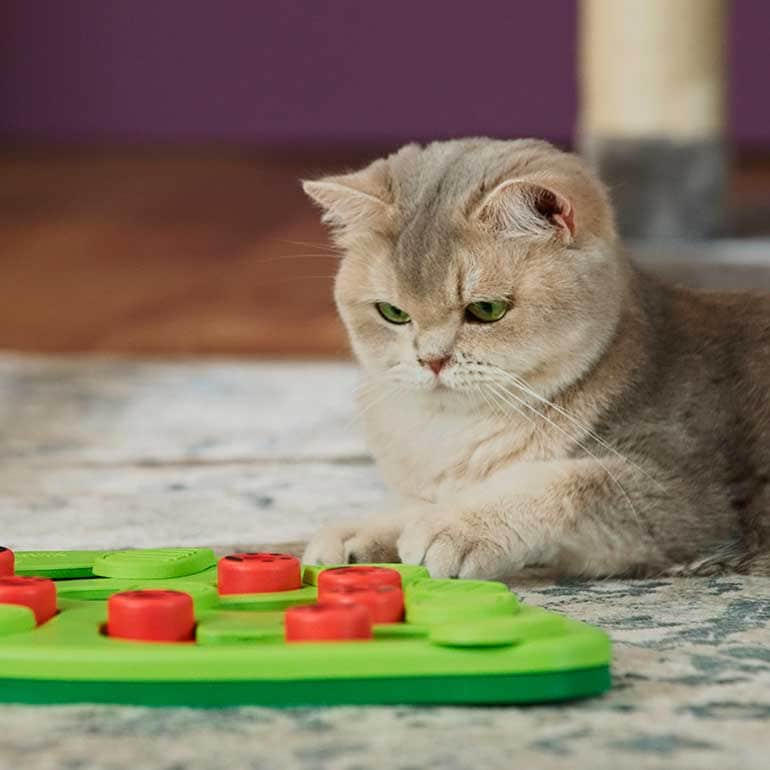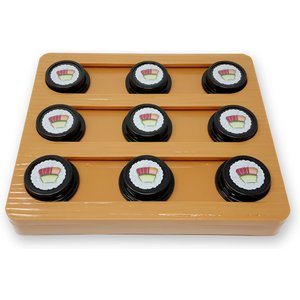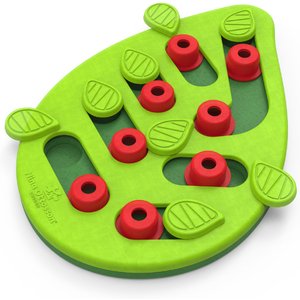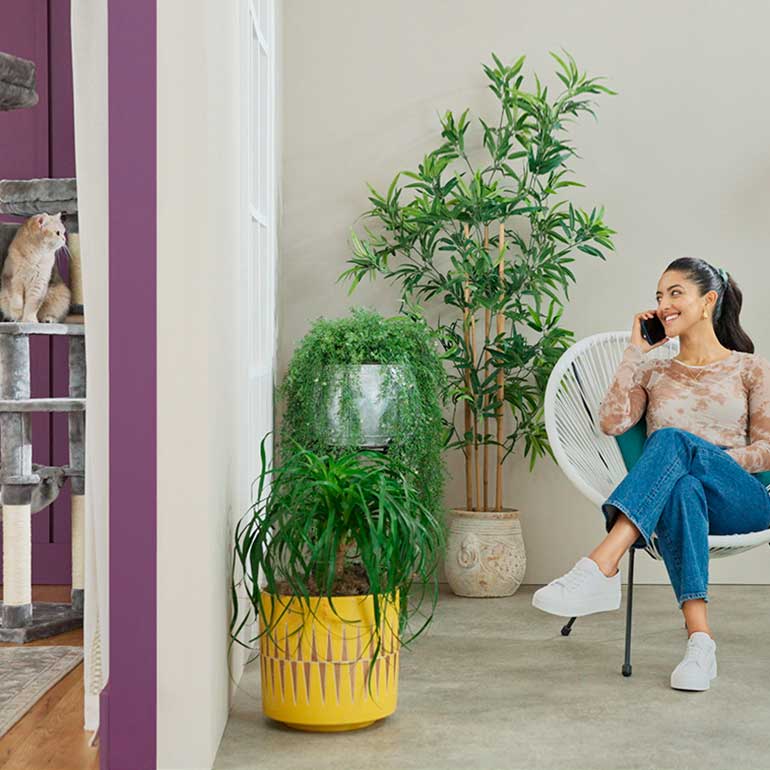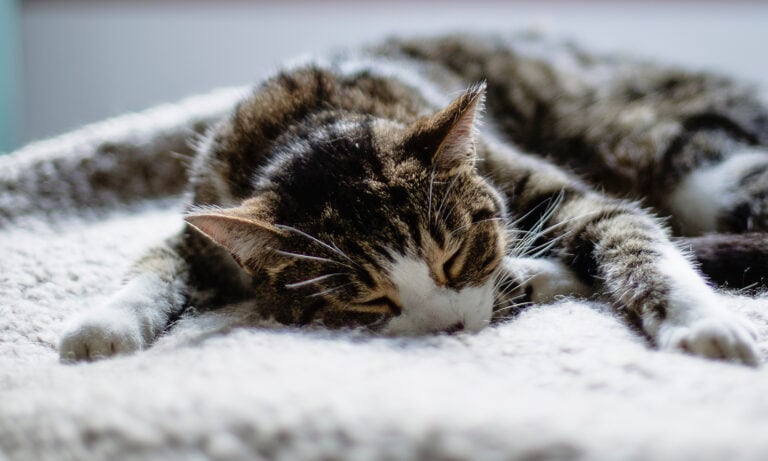Click the buttons to jump to each section:
Signs of Separation Anxiety in Cats
Here’s the understatement of the century: Cat behavior can be confusing. That’s especially true for the signs of cat separation anxiety, which can also be signs of boredom, stress, or underlying medical conditions. But here’s the bottom line: Cat behavior problems like tearing up your carpet or peeing on your bed often indicate something more serious than a quirky personality or a personal vendetta your cat has against you. Here are some possible signs of cat separation anxiety:
- Excessive vocalization/meowing
- Urinating or defecating outside the litter box
- Destructive behavior (aka damaging things)
- Changes in appetite
- Vomiting
- Excessive self-grooming
- Extreme excitement when you leave or return
- Attacking when you leave or return
- Trying to escape when you leave
If your cat does any of the above when they’re left alone or when their favorite family members are away, there’s a chance that they may have separation anxiety.
But remember: Cats are complex creatures who might engage in these behaviors for many reasons, from boredom to more serious health concerns. Separation anxiety is usually a diagnosis of exclusion, which means that your vet will likely want to rule out other possible reasons for their behavior first. Before you assume your cat has separation anxiety, take them to the vet for a checkup to make sure there are no underlying medical reasons for their behavior.
After your vet has ruled out a health issue, ask yourself: Does my cat engage in these behaviors only when I’m away or preparing to leave? If the signs persist long after you’ve returned home, there’s a good chance that your absence isn’t what’s triggering their behavior.
If, on the other hand, you can identify a pattern of behavior that begins with you walking out the door, you’re probably dealing with separation anxiety. A pet camera can help you find that pattern by showing you exactly what your cat is doing when they’re home alone.
If you’re still unsure, talk to your vet, an applied animal behaviorist or a board-certified veterinary behaviorist. Make sure your behaviorist is certified by a professional group, such as the American College of Veterinary Behaviorists or the Animal Behavior Society. Both organizations have online directories to help you find a credentialed professional near you.
What Causes Separation Anxiety in Cats?
There are several factors that can trigger separation anxiety in cats. These can include:
- Noise phobias
- Limited enrichment (playtime, exercise and bonding with the parent) at home
- Exposure to stressful experiences during the socialization period (2 weeks to 8 weeks old), which is common among cats who were orphaned or weaned too early
- Changes in a cat’s routine or lifestyle, such as moving to a new home or being taken in by a new pet parent
- Genetic predisposition
What we know for sure is that every cat is unique, so the reasons why cats have separation anxiety may differ from cat to cat, too.
How to Manage Cat Separation Anxiety
1 Create a Behavior Modification Training Plan
Behavior modification training is the gold standard for dealing with cat separation anxiety—but it’s also the most complicated. You’ll want to begin by consulting with a veterinary behaviorist, who can help you make a training plan tailored to your unique pet.
Each cat’s anxiety has different triggers and associated behaviors, so there’s no one-size-fits-all approach to behavior modification. However, a typical approach includes the following techniques:
- Practicing short absences, working up to longer periods of time away.
- Desensitizing your cat to their anxiety triggers. These are typically things like the sound of your house keys or putting on your shoes—things you do in preparation to leave home, also known as departure cues. Many behavioral modification plans include practicing these triggers without actually leaving home so your cat stops associating them with your absence.
During the behavior modification process, it’s important that your cat is never left alone (except when you’re practicing short absences). If you keep leaving your cat alone for longer than they can handle, they will never feel safe enough to start to relax. Plan to stay home if possible, or make arrangements for a trusted pet sitter to accompany your cat if possible.
2 Use Pheromone Sprays or Diffusers
3 Provide Cat Trees and Perches
Many cats prefer to hang out in high places, rather than at ground level. Giving them a cat tree or other perch where your kitty can get a birds-eye view of their surroundings can help some cats feel more secure while you’re away. Find out how to choose the best cat tree for your unique cat.
If you have multiple cats, remember the “plus-one” rule: For items like litter boxes and cat trees and perches, it’s ideal to have one for every cat in your household, plus one extra. It’s a good idea to spread these out around your home so each cat has their own safe space.
4 Have Some Extra Playtime
Cats are intelligent animals who love to play and explore. If they don’t get enough mental and physical exercise, they may use that pent-up energy to fuel their anxious behaviors. A good bout of play with a teaser wand or a game of fetch with a cat ball or chaser can help. Regular interaction also fulfills a cat’s need for companionship, and prevents them from feeling lonely or bored. Plus, it’s just plain fun!
Fresh air can also be a huge help for cats with separation anxiety. If you’re able to let your cat play in an outside playpen or “catio” where they can see, smell and experience new things, it can do wonders for their anxiety—and with so much to explore, it’ll help them get used to spending time on an independent activity, rather than focusing on your presence. Just ensure that the outdoor space is fully enclosed and secure to prevent them from escaping and getting lost.
5 Try a Puzzle
6Ask Your Vet About Supplements and Medications
Cat Separation Anxiety FAQ
Q:What are the symptoms of separation anxiety in cats?
A:Cats who experience separation anxiety often show signs of stress such as vocalization/excessive meowing, inappropriate elimination, and excessive grooming.
Q:How do you stop separation anxiety in cats?
A:Separation anxiety is often a lifelong condition for cats—but you can manage your cat’s symptoms. Suspending absences and slowly building up the time you are away from your cat in carefully planned training sessions is key to making progress. Other tactics, like pheromone sprays, increased exercise and calming supplements, can also help.
If your cat is experiencing cat separation anxiety, the time to deal with it is now. With the tips above, and in partnership with your vet or behaviorist, you can help your cat feel better about being left alone.
This content was medically reviewed by Chewy vets.
Like this story? Check out more of our favorite reads:
Share:

